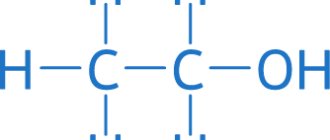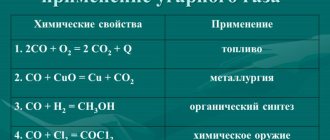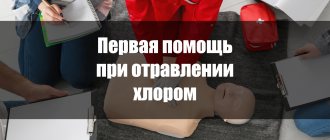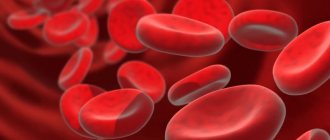Domestic gas poisoning is one of the most common reasons for calling an ambulance. This situation is very dangerous for human health. Failure to provide timely assistance can lead to death. No one is immune from such cases, so it is important to know what to do and how to provide first aid to the injured person.
In the case where the poisoning occurred voluntarily, we are talking about suicide. Then you will need the help of not only a therapist, but also a psychologist. You can help a person in any case if you do it in time.
Symptoms of household gas poisoning
Methane is a household gas that enters people's apartments and houses through gas pipelines. It is colorless and odorless, so poisoning occurs very easily. It is for this reason that other types of gas that have some aroma began to be added to methane. But despite this, household gas poisoning occurs.
Content:
- Causes of poisoning
- Symptoms of household gas poisoning
- Forms of poisoning
- First aid
- Treatment of poisoning
One of the main symptoms of poisoning is headache. Most often it has increasing intensity and is aching in nature. In certain cases, pain occurs in the forehead and temporal area. Most often, a person cannot explain their location. Also, people who have been poisoned by household gas have impaired coordination of movement. This occurs due to severe dizziness, everything in front of a person’s eyes blurs, and limbs weaken.
Confused consciousness is noted. The victim is not able to explain what is happening to him, cannot answer simple questions - for example, voice his name, surname, date of birth.
In addition, nausea and vomiting are observed. These are fairly common signs of any poisoning. In some cases, they can save a person’s life, since in case of incessant vomiting, the victim has to seek help from doctors. There is also pain in the chest area. This symptom may not necessarily be present, but victims of domestic gas poisoning often report the presence of chest pain. In certain cases, others may perceive this as a sign of a heart attack. Only a doctor can definitely make the correct diagnosis.
It is important to understand that often the victims are unconscious, so it is almost impossible to get any explanation from them. In such a situation, you need to pay attention to the skin. When poisoned by household gas, they turn red or blue.
There is a certain group of people in whom the described symptoms are too pronounced. This includes those who have diseases of the respiratory system and heart problems that occur in a chronic form. This also applies to pregnant women, young children and the elderly. In addition, this category includes smokers and people with chronic blood pathologies.
Actions for thermal burns
- eliminate the cause of the burn, ensure the safety of the victim and your own;
- remove the remains of burnt clothing (be careful - do not tear off tightly adhered parts of clothing from the affected areas!);
- If possible, cool the burned area of the body under running water for 10-15 minutes. Do not apply ice to a burn.
- Cover the affected area with a sterile or clean bandage, using it as a cover - it should just touch the body. Never use cotton wool as it will stick to the affected area.
- Give the victim plenty of salt mineral water or a soda-salt solution (1 teaspoon of salt and 1 teaspoon of soda per 1 liter of water);
- give the victim any painkillers tablets, 1-2 tablets. Do not give alcohol to the victim;
- for burns of the extremities, perform immobilization (temporary immobilization of the affected area of the body);
- In case of eye burns, rinse them with water for 5-10 minutes;
- in cold weather, warm the victim.
Do not use oils or ointments on a burn. Do not open the blisters, as this can cause infection.
There are many classifications of burns, most of them are based on the clinical course and doctor’s tactics for a particular burn injury. The two most common and clear classifications are by depth of damage and by type of damage.
Clinical and morphological classification
First degree burn. The upper layer of the keratinizing epithelium is affected. It manifests itself as redness of the skin, slight swelling and pain. After 2-4 days recovery occurs. The dead epithelium sloughs off, leaving no traces of damage.
Second degree burn. The keratinizing epithelium up to the germinal layer is damaged. Small blisters with serous contents form. They heal completely due to regeneration from the preserved germ layer in 1-2 weeks.
Third degree burn. All layers of the epidermis and dermis are affected.
Third A degree . The dermis is partially affected; the bottom of the wound is the intact part of the dermis with the remaining epithelial elements (sebaceous, sweat glands, hair follicles). Self-recovery of the skin surface is possible if the burn is not complicated by infection and secondary deepening of the wound does not occur.
Third B degree. Total death of the skin down to the subcutaneous fat.
Fourth degree burn. Death of underlying tissues, charring of muscles, bones, subcutaneous fat.
Forms of poisoning
In medicine, there is a clear distinction between household gas poisoning:
- light form;
- medium shape;
- severe form.
In a mild form, there is dizziness, weakness in the body, a desire to lie down and sometimes pain in the chest. In this state, a person can independently leave the room and seek help.
The middle form is more dangerous. The condition sharply begins to deteriorate; in addition to the symptoms of a mild form, impaired coordination of movements is added, the pulse quickens, and consciousness becomes confused.
In a severe form of poisoning, a person is unconscious, he may develop symptoms of pulmonary edema, and the heart and brain are affected.
There is also an instant form of household gas poisoning. In this case, after a few breaths, asphyxia occurs and the victim loses consciousness. This is the most dangerous form, as the person dies within a few minutes.
Warning about the use of cookies on the Info KS website
Under EU law, digital content providers are required to provide users of their sites with information about their policies regarding cookies and other data. The site administration must obtain the consent of EU end users to store and access cookies and other information, as well as to collect, store and use data when using Google products.
A cookie is a file consisting of numbers and letters. It is stored on the device from which you visit the Info KS website. Cookies are necessary to ensure the functionality of sites, increase loading speed, and obtain the necessary analytical information.
The site uses the following cookies:
Necessary for the site to work: navigation, downloading files. There is a difference between a person and a robot.
Cookies to improve performance and collect analytical information. They help the site administration understand the interaction of site visitors and provide information about the pages that were visited. This information helps improve the operation of the site.
Advertising cookies. These files provide information about visits to our pages, data about links and advertising units that interested you. The goal is to display content on the pages that is most targeted to you.
If you do not agree to our use of cookies on your device, please leave the site.
By continuing to browse the Info KS website you consent to the use of cookies.
The most common cause of acute intoxication is gaseous poisoning. The consequences of gas entering the body can be very serious, even fatal, so it is important to provide timely assistance to the injured person. In order to notice the first signs of intoxication, you should know how the gas affects the body and how the consequences of this effect manifest themselves.
First aid
Naturally, if a person finds himself in such a situation and is next to the victim, he should immediately call an ambulance, which will carry out all the necessary resuscitation measures. While waiting for doctors, you need to provide first aid correctly. First, the victim should be taken out into fresh air. If this is not possible (the person is heavy), then open all windows, doors and vents, creating a draft in the building. On the street, a person should be placed on his back, with ice or a wet, chilled towel applied to his head. If you don't have these items, you can use whatever you have on hand - for example, some frozen meat.
Next, the person’s body is freed from constricting things: unbutton the shirt, jacket, take off the sweater or T-shirt, loosen the belt on the trousers. If the person is conscious, it is important to keep them hydrated. The ideal option would be regular purified water, but any non-alcoholic drinks will do. It is also important to maintain contact with the victim, preventing him from falling asleep or losing consciousness.
When providing first aid to victims, it is important not to make mistakes so as not to worsen their condition. It is important to remember that in a room filled with household gas you cannot turn on electrical appliances, use matches or a lighter. Such actions may cause an explosion and fire.
When assistance must be provided in the building, it is better to have assistants. The ideal option is 2-3 people. If artificial respiration is required, it should be done exclusively with a damp cloth. It is placed on the victim’s mouth, and inhalation is done through the nose. This is necessary in order to avoid poisoning of rescuers. If a person is unconscious, but the pulse and breathing are within normal limits, you can try to revive him with ammonia. To do this, a piece of cotton wool should be moistened with alcohol.
Preventive recommendations
How to prevent carbon monoxide poisoning? To avoid CO poisoning, the following poisoning prevention measures are necessary:
- at enterprises where CO is used, conduct regular training and provide work areas with CO detectors;
- use only serviceable and high-quality heating equipment;
- when heating with stoves, clean and check chimneys for functionality;
- ventilate rooms or use ventilation where open flame appliances are used (gas stove and water heater);
- take precautions when the car engine is running in the garage - sufficient ventilation and air exchange, make sure not to fall asleep while the engine is running in the car;
- Do not spend a lot of time near roads (motorways) with active traffic.
Thus, being alert and aware of the possible risks of carbon monoxide poisoning will help prevent an emergency situation. Otherwise, if you are poisoned by fumes, you must not panic and follow the recommendations given. Clarity and coherence of actions will preserve not only health, but also life.
Characteristics of methane
This gas is odorless and completely transparent. It should be borne in mind that the typical “gas smell” inherent in household gas is usually caused by a special additive - methyl mercaptan gas in a small concentration. However, this odor may not be noticeable to people with a poor sense of smell. When methane burns, a bluish glow is observed. In a certain quantitative ratio with air it becomes explosive.
Methane is relatively low-toxic and lighter than air, so in open space the gas simply rises and does not enter the lungs. However, closed spaces where it can accumulate unhindered for a long time are quite another matter. In order to be poisoned by methane, you need to inhale it at a concentration of approximately 25-30%.
Methane has one unpleasant property - it easily penetrates the blood-brain barrier and directly affects the brain. At the same time, it depresses the respiratory system. Damage to the central nervous system is also noted. This entails the development of oxygen starvation. If appropriate measures are not taken in a timely manner, gas poisoning and, as a consequence, death will occur.
How can you get poisoned with methane?
Methane poisoning can be acute when a person inhales the gas as a result of an accident or improper handling of gas appliances, as well as during a long stay in a wetland or in a mine.
Another way of methane poisoning is long-term regular inhalation of small doses of methane. This happens, as a rule, to people working in chemical production, in mines, in mines.
The third way of chronic intoxication is increased formation of methane in the intestines during various diseases (chronic enterocolitis, dysbacteriosis). Although such endogenous methane does not lead to severe intoxication, it can cause various functional disorders in the body, gastrointestinal discomfort, and poor health.
What medications to take
To block the effects of intoxication caused by household gas, the doctor prescribes medications that will help quickly remove toxic substances. The treatment complex consists of the following medicinal forms:
- To block the spread of toxic substances throughout the victim’s body, an antidote is administered. Acizol is considered the most effective;
- the next stage is connecting IVs with antihypoxants and medications that normalize the functioning of the heart muscle;
- An Ambu bag helps ensure oxygen supply or intubation is performed;
- if the patient is not breathing, he is urgently sent to the intensive care unit, where resuscitation procedures are carried out aimed at stabilizing the condition.
As soon as the patient’s condition can be stabilized, an examination is performed to determine abnormalities in the functioning of the organs. This allows you to begin the second stage of therapy. This is a treatment complex that provides for the complete elimination of the consequences of gas poisoning and includes the administration of the following drugs:
- to prevent the development of inflammation in the respiratory system, Pulmicort is prescribed;
- Levopod helps block cramps and also reduce muscle tone;
- to eliminate pain and also alleviate the condition of the victim, Novigan is prescribed;
- To strengthen the body's defenses and to destroy the formed carboxyhemoglobin, the drug Carboxylase is indicated.
In addition, the therapy is supplemented with sorbents, with the help of which it is possible to neutralize toxic substances and cleanse the body. Polysorb is considered the most effective medicine for these purposes.










